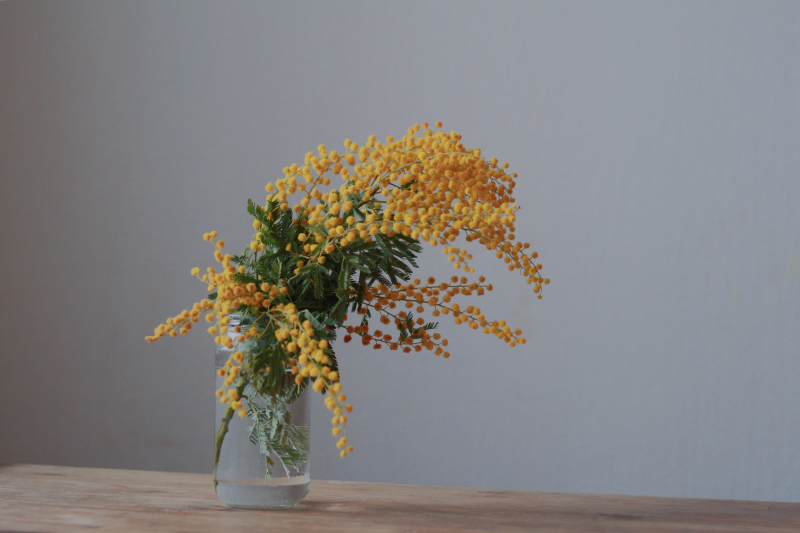Mimosa the Flower
These yellow fluffy balls – acacia flowers – are an absolute must for this holiday. Dotting the Italian landscape in March, they became the symbol of sensitivity, strength and sensibility when Italian feminists picked this flower as their symbol back in 1946. I’m not sure most Russian are aware of this fact, but it is certainly the symbol of spring here and a welcomed part of any bouquet.
Mimosa the Salad
Also fluffy yellow on top and somewhat airy (mayo doesn’t count) this salad is a staple of many Russian celebrations. It’s super easy to make and uses readily available ingredients. Boil, peel and grate four potatoes, two carrots and six eggs, each ingredient separately (even whites and yolks!). Add a cup of mayo to a can of tuna. Make layers: tuna mixture at the bottom of the dish, sprinkle with grated egg whites, drizzle with mayo, add grated potatoes and carrots. Drizzle with more mayo and top with grated yolk. It will look almost like a mimosa flower that’s good enough to eat. For detailed instructors, check out this Natasha’s Kitchen recipe.
Mimosa the Cocktail
The first time I was offered this concoction, I was on a reporting trip and it was 8 am. I wasn’t quite ready – and have regretted it ever since. Bubbly and bright, it’s perfect for a festive brunch. All you need is sparkling wine (or a non-alcohol sparkling grape juice) and orange juice. The classic recipe calls for equal parts wine and juice, but you can play with it. Just add the sparkling ingredient first and the juice second. Don’t stir or it will go flat! Berries and pomegranate seeds are a nice touch.

Credit: Monika Grabkowska (@moniqa) on Unsplash
Mimosas add the bright color and cheer to this special day, and manage to be beautiful and resilient at the same time, just like a lot of women we love. Want to know more about Russian women who’ve changed the world? Here's to rulers and cosmonauts, scientists and innovators, and, of course, all the women who make a difference in our lives.




